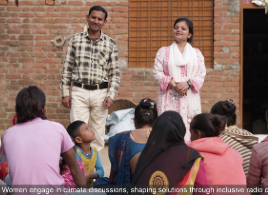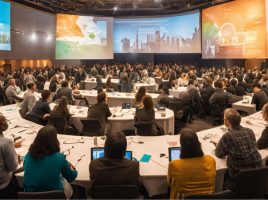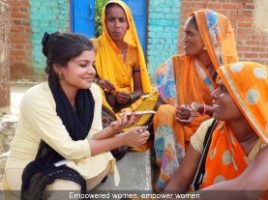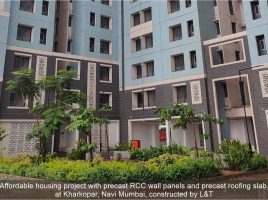Rebuilding Bundelkhand

Few places on Earth exemplify better than the region of Bundelkhand in Central India the adage of ‘resource curse’. Despite its enormous endowment of resource wealth – its rich deposits of minerals (including the only operating diamond mine in India) and dense forests, diverse fauna and flora; its unique history of savvy water management; its amazing monuments and forts, its brilliant, courageous people and vibrant culture – it has become the butt of the demeaning proverb to be ‘as poor as Bundelkhand’. The whole region, comprising 14 contiguous districts spread over Southern Uttar Pradesh and Northern Madhya Pradesh, today languishes in a slowly swinging hammock suspended between a languid hope-filled past and an active, hope-fulfilled future.
It was in 1985 that Air Vice Marshal Surinder Sahni, recently retired from a distinguished and highly decorated career in the Indian Air Force, approached Development Alternatives (DA) with the proposition of opening a ‘branch’ of DA near Jhansi, where he had been born and raised, in the hope of returning to his roots and helping the people of the region to fulfill their aspirations and create an ambience for the local youth to reach their potential. His aim was to help them restore the productivity of their resources and the wellbeing of their communities.
By 1990, DA had set up a vibrant programme of activities in several districts of Bundelkhand, under the leadership of AVM Sahni, who unleashed a broad-based blitz attack on poverty through programmes to bring back the forests, rejuvenate the soils and crops, regenerate local economies through creation of sustainable livelihoods and construction of eco-houses, and, above all, revive the water management systems that had been pioneered by the Bundela kingdoms four hundred years earlier but had since been destroyed under predatory colonial tax regimes and largely forgotten since.
Around 1992, DA had established enough of a reputation to attract the attention of the then Chief Minister of Madhya Pradesh, Mr Digvijay Singh, who travelled all the way to Orchha and presented DA with 10 acres of land and inaugurate an Innovation and Action hub/campus that came to be known throughout Bundelkhand, India and indeed the World, as ‘TARAgram’.
During the following years, local communities, under the guidance of AVM Sahni and his DA teams, built hundreds of ‘check dams’ to slow the stream flows during the monsoons, making perennial the many rivers that were dry for most of the year, recharging the underground aquifers, and creating the possibility of an extra one or two crops each year – leading to huge increases in household incomes, health and wellbeing. The modernised cropping choices, production of natural fertilisers, and construction of dams, houses, and infrastructure led, of course, to the creation of numerous additional livelihoods and incomes, reducing the pressure to out-migrate.

In his second career of almost 30 years, as Vice President and Senior Advisor of DA, AVM Sahni proceeded to bring his enormous insight, initiative, and intense energy to set up a massive programme for restoring and rebuilding the social and natural processes in the districts around Jhansi – Lalitpur, Tikamgarh, Datia, Orchha and others – resulting in major and measurable improvement in the lives and livelihoods of the people and in the productivity of their land, water, and biological resources.
This issue of the newsletter is a tribute to the work of AVM Sahni and the cohorts of young colleagues he brought on board – many successive DA squadrons, trained and nurtured by him and his very dedicated senior colleagues in DA into a potent force for community transformation, environmental regeneration, and economic sustainability.
The DA Family hopes that our work in Bundelkhand can serve as a model for the kind of holistic, systemic interventions that can, at remarkably modest cost, make even the poorest regions of India, and indeed the world, gain for themselves a more prosperous and sustainable future.
The views expressed in the article are those of the authors and not necessarily those of Development Alternatives.
This blog first appeared as an editorial in Development Alternatives Newsletter August, 2024 https://devalt.org/newsletter/47






Leave a Reply